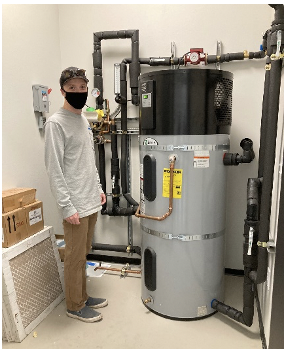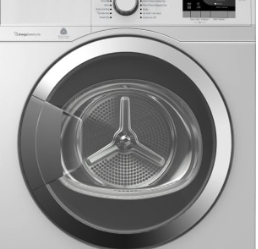California has been on a path to reduce manufactured chemicals that contribute to air pollution, water pollution, ozone depletion and global warming. One classification of chemicals used throughout the building industry that the California Air Resources Board (CARB) regulates is hydrofluorocarbons (HFC). HFCs are used as refrigerants in stationary refrigerator systems, stationary air-conditioners, chillers, and other end uses such as foam blowing agents. The most recent step in the phase down of HFCs took effect Jan 1, 2023, and more will follow in 2024, 2025 and 2026.
As architects and design professionals, we do not have direct control over a particular manufacturer, but we do have a collective interest in providing our clients with the most current industry and regulatory information, including discussion of refrigerants. By giving clients the opportunity to future-proof their development and meaningfully participate in project development, we can help reduce the building’s contribution to global warming emissions and pollution.
For some of the more common heating, ventilation and air-conditioning (HVAC) end-uses, CARB has opted to regulate the refrigerants used in the manufacture of new equipment sold in California via an upper global warming potential (GWP) rating. Here’s a look at the current schedule for implementation.
Source: California Air Resources Board excerpt from California Code of Regulations, Title 17, Division 3, Chapter 1, Subchapter 10 Climate Change, Article 4 -Final Regulation Order
The acronyms are many. As a quick reference guide:
· GWP – Global warming potential, refers to a substance’s ability to hold heat in the atmosphere and contribute to the greenhouse effect. CO2 is the baseline with a GWP of 1; all others are measured against CO2.
· PTAC – Packaged terminal air conditioners
· PTHP – Packaged terminal heat pumps
· VRF – Variable refrigerant flow
Practically speaking, many of us as design professionals may not have noticed the change that took effect in January of this year, but you may begin to notice more manufacturers and supply houses advertising units with R-32 refrigerants (GWP 675) as a California-compliant option versus the common R-410a refrigerant seen throughout the room AC and PTAC industry; R-410a has a GWP of 2,087 – well outside the new limits. An added bonus is that the HVAC units with R-32 refrigerant will have higher efficiency ratings.
(Note that the number assigned to a refrigerant (R-410a, R-32, R-290 etc.) is related to the chemical composition of the substance and is totally unrelated to the GWP.)
As the phase out of R-410a and other high GWP refrigerants continue, keep an eye out for manufacturers advertising equipment with natural refrigerants, such as propane (R-290, GWP=4), ammonia (R-717, GWP <1), and carbon dioxide (R-744, GWP=1). To keep up on product lines and manufacturers that use natural refrigerants, subscribe to – or get your consultants to subscribe to – industry resources focusing on natural refrigerants. Hydrocarbon21.com, Ammonia21.com, and R744.com are three related sites promoting natural refrigerants and the manufacturers that use them.
Going forward, we can serve our clients well by keeping abreast of the current regulations and policy trends while pointing out opportunities to incorporate manufacturers and product lines that are striving to reduce the adverse environmental impacts of HVAC systems through the use of low and very-low GWP refrigerants.
Have questions? Reach out!
For more information about California policy, regulation, and CARB’s R4 program visit the links below:







